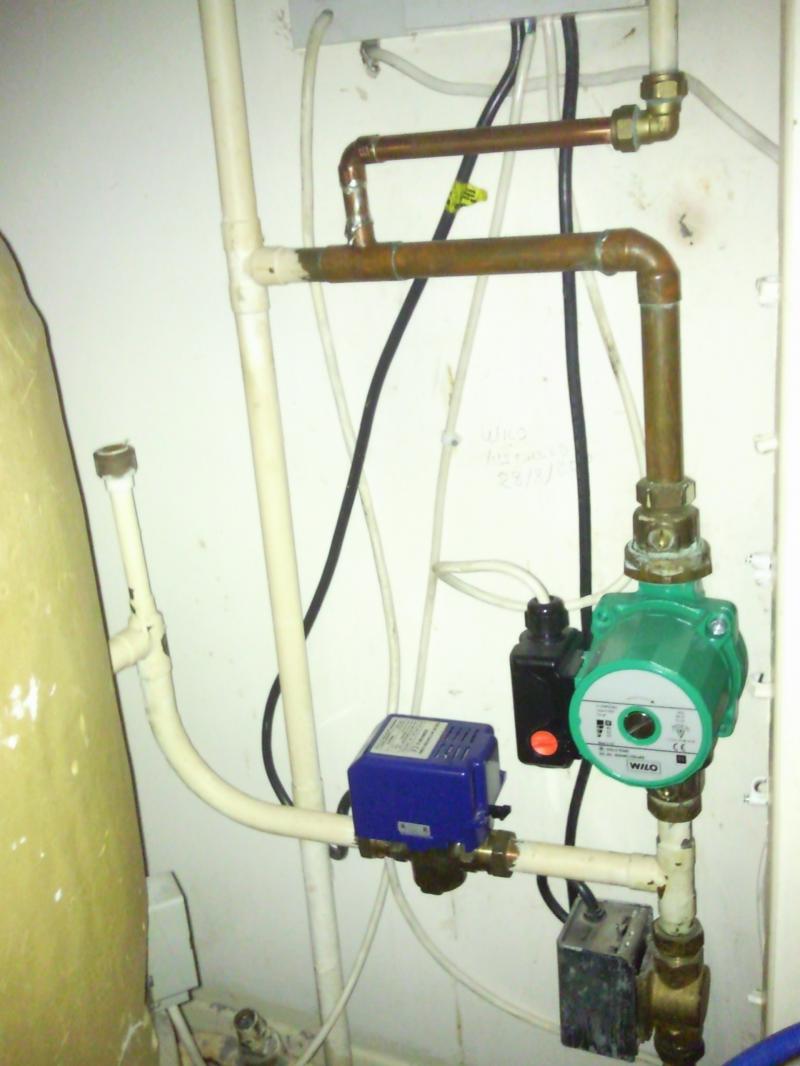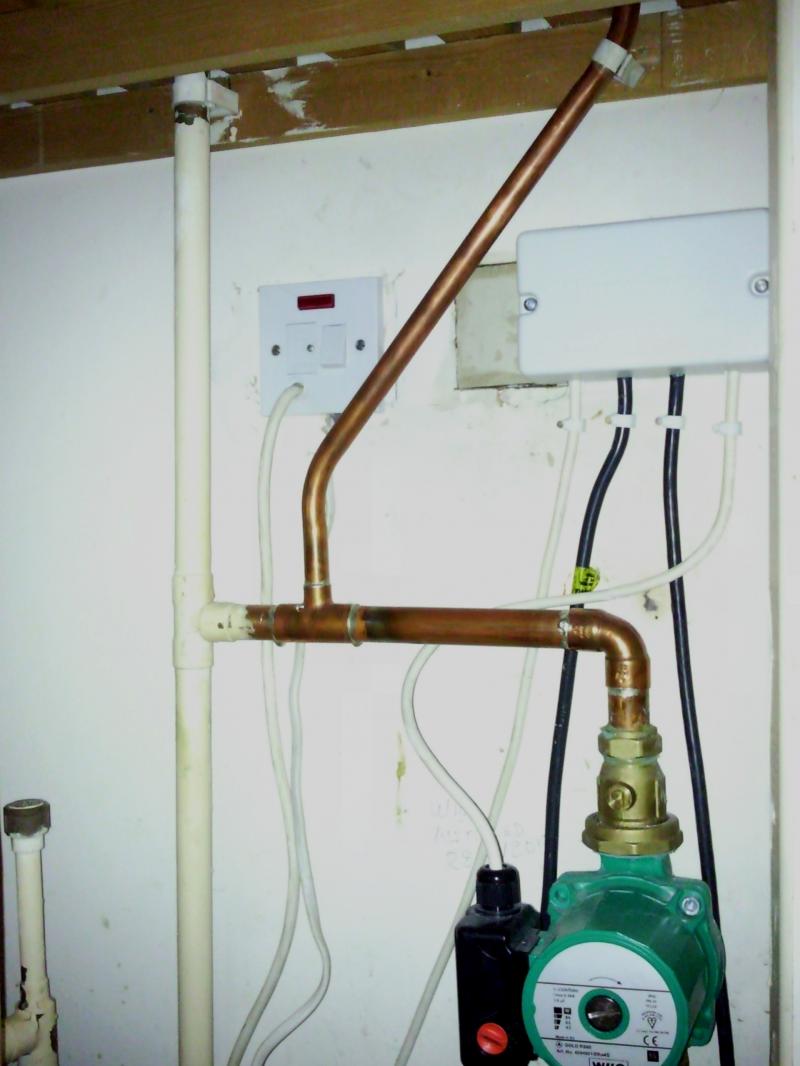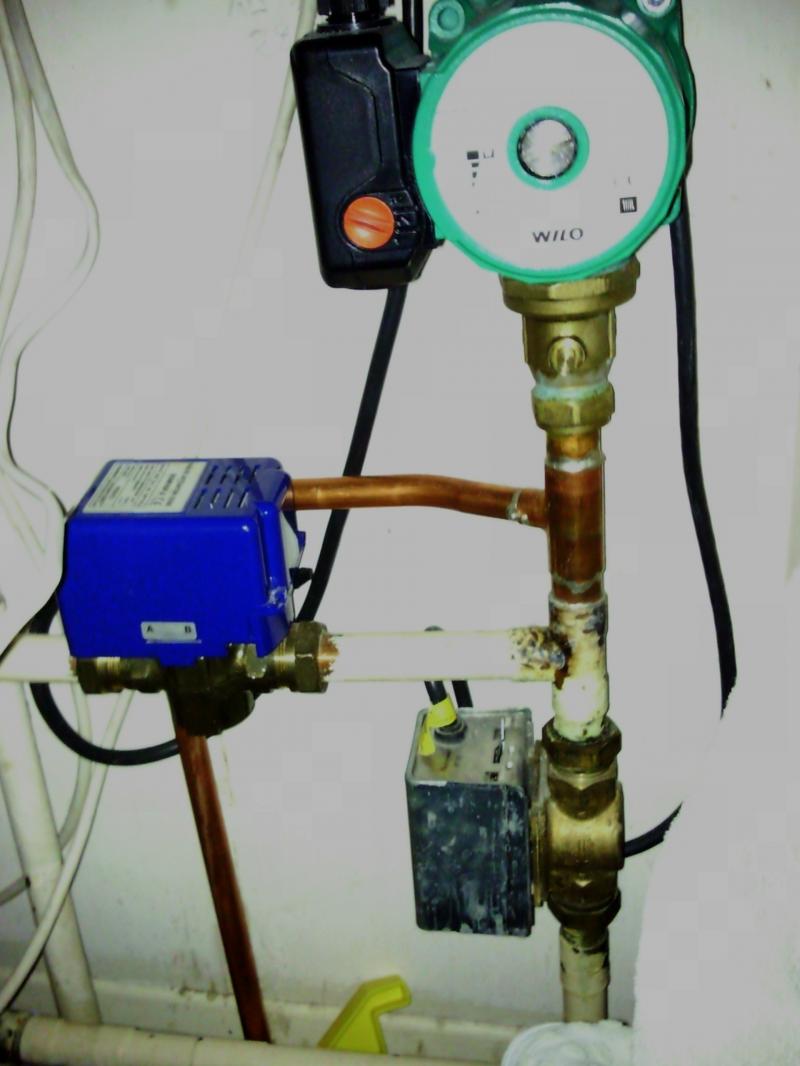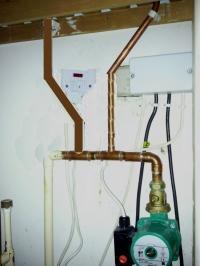Ok, so my system;
Pumped primary, vented system with indirect cylinder for DHW.
The system is configured with the pump in the airing cupboard on the flow from the boiler, then to 2 motorised valves, one feeding the DHW coil, and one feeding the rads.
I have recently cleaned my system, so I don't know if this has caused / (re-caused?) the problem due to the water now moving more freely, but anyhoo...
If I switch on the circuit for just the DHW all is fine, the valve opens, the switch triggers, and the pump and boiler start. Switch it off and the valve starts to shut, the switch is released, and the boiler and pump shutdown and no pumping over.
If I switch on the circuit for the CH the valve for that opens fine, the switch triggers, pump and boiler start.
However when I then switch OFF the CH the valve starts to close and the boiler and pump switch off, the valve continues to close and as it finishes I can here the system pump over into the F/E tank in the loft (presuming I have the access hatch open).
The pump over happens irrespective of pump speed (1/2/3), and irrespective of whether the DHW is set to come on / off at the same time as the heating or not.
It seems to be the involvement of the CH circuit that then causes it to pump over at switch off, but I don't know why this would be?
Is it simply that there is a greater mass of water moving around the system when the CH is on, and that then has more momentum when the pump and valves shut off and so forces water out the vent pipe?
I have wondered if I need to close down my radiator lockshields if this is the problem, but I have no idea if this would help or not.
Any suggestions please?
Pumped primary, vented system with indirect cylinder for DHW.
The system is configured with the pump in the airing cupboard on the flow from the boiler, then to 2 motorised valves, one feeding the DHW coil, and one feeding the rads.
I have recently cleaned my system, so I don't know if this has caused / (re-caused?) the problem due to the water now moving more freely, but anyhoo...
If I switch on the circuit for just the DHW all is fine, the valve opens, the switch triggers, and the pump and boiler start. Switch it off and the valve starts to shut, the switch is released, and the boiler and pump shutdown and no pumping over.
If I switch on the circuit for the CH the valve for that opens fine, the switch triggers, pump and boiler start.
However when I then switch OFF the CH the valve starts to close and the boiler and pump switch off, the valve continues to close and as it finishes I can here the system pump over into the F/E tank in the loft (presuming I have the access hatch open).
The pump over happens irrespective of pump speed (1/2/3), and irrespective of whether the DHW is set to come on / off at the same time as the heating or not.
It seems to be the involvement of the CH circuit that then causes it to pump over at switch off, but I don't know why this would be?
Is it simply that there is a greater mass of water moving around the system when the CH is on, and that then has more momentum when the pump and valves shut off and so forces water out the vent pipe?
I have wondered if I need to close down my radiator lockshields if this is the problem, but I have no idea if this would help or not.
Any suggestions please?





